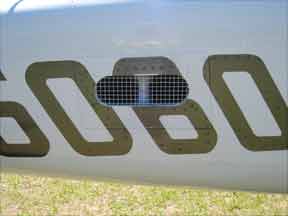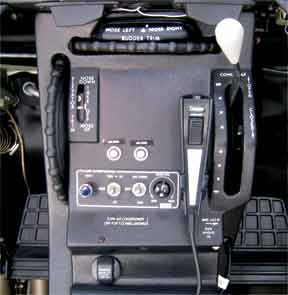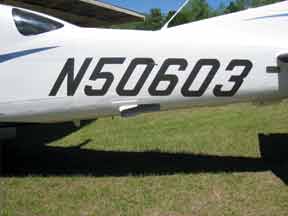There’s not a pilot out there who hasnt pined for an AC button to push after just minutes holding short of the runway in the summer heat. But the harsh reality is that aircraft AC systems cost in all the ways we hate: weight, power draw and money. How much? Try 45-90 pounds, several horsepower and five digits before the decimal for the equipment. Now add the install time, which can top 100 hours. Not much has changed with installed systems since we last looked at AC in 2008, except for the option of a “portable” AC unit.
Engine or Electric?

Compressing AC refrigerant is either done directly off the engine or via an electrically powered compressor. The engine-driven option is usually used for small aircraft. It works passably on the ground, but doesnt really pack a punch until the engine is turning faster. The compressor must fit somewhere under the cowl, but you don’t need a high-output alternator.
Electric compressors can be put anywhere (the tailcone is popular) and they can be run on the ground by GPU. After engine start, you’ll need enough RPM to energize the alternator, usually at least 1300 RPM. Thats usually a 100-amp alternator. Make it two for systems that cool bigger cabins. Thats because the AC will draw between 40 and 100 amps all by itself, depending on the system and the size of the area its designed to cool.
No longer Keith
The STC leader by a mile in aircraft AC is still called Keith by everyone, even though they were acquired by Meggit (Addison), Inc. The company offers over 80 STCs, as we’ll as supplying the OEM air conditioning for companies like Cessna, Cirrus and Socata. Keith also offers conversion kits for R-12 (Freon) systems to make them work with the somewhat more environmentally friendly R-134a.
Keiths single-engine systems are all engine-driven. Size and power varies, but a Cessna 172 would use a 59-pound, 10,000 BTU system. Step up to the Bonanza and its 14,000 BTUs and 79 pounds. Theyre not cheap, either. The kit for the Cessna is $16,065 for the hardware and takes 120 hours to install. The Bonanza costs $22,005

and hits 200 hours of labor.
Twins and turboprops singles get electric systems. For a Cessna 310, its a 12,000-BTU system that weighs 80 pounds and requires 65 amps of juice. Itll hit you for $18,905 and take 100 hours to install. A TBM 700 is 16,500 BTUs, 90 amps and $31,556 plus over 200 hours labor.
Envirosystems
The other big name in aircraft cool is Envirosystems, with many OEM contracts. Their systems are available in the aftermarket through companies like Aircenter, Inc. in Chattanooga, Tennessee.
Aircenter sells its STC installations under the name Cool Air for Barons, piston-powered Twin Commanders and Cessna 310s. But they have done field approvals for dozens of others. Garry Gadberry, president of Aircenter, told us, “If its a 28-volt aircraft, we can develop a system for that aircraft. We have the electrical and structural engineering capabilities on demand.”
Cool Air is an electric system that comes in two basic flavors, a 16,500 BTU, 100-amp, 57-pound version and a 14,000-BTU, 75-amp, 40-pound one. Both require 28-volt systems, 100-amp alternators and take 100 to 125 hours to install.
Aircenter pricing for these kits is simple: $20,300 for the parts and $5500 flat for the installation if they do the work. That price is actually $1500 less than they charged when we last reported on them. “As you do more of these, you get better at them,” says Gadberry. Field approvals will cost an extra $3000-$5000, depending on how much new engineering data Aircenter must generate.
Kelly
We were impressed with the potential of the Kelly Aerospace Thermocool system

back in 2008. The systems DC brushless compressor draws only 33 amps (45 for max cooling). Its rated for 14,000 BTUs and weighs about 70 pounds, but 23 of those pounds are for the included 100-amp alternator that also acts as an electrical-system backup.
Thermocool is a “set it and forget it” system with a digital climate control. There’s no restriction on when you can use the system, unlike many that required turning it off for takeoff and landing. Neat features include a smart sensor that will automatically power up when a GPU is connected, turn off when the GPU is disconnected, and then turn back on after engine start. All that for only $14,500 (and about 100 hours labor).
Kellys expansion of the STC has been slow, with only the 182R added since we looked three years ago. They claim the P and Q models, as we’ll as 172R and S models, should be approved this fall.
Flightline AC
Catering to the experimental crowd is Flightline AC. They have standard kits for popular models like the RV-10 and will work with builders to come up with a kit for most any installation in either an engine-driven or electrical version. The electric systems cost $1200 more, however.
The compressor for a typical, four-seat single weighs about 45 pounds for the engine-driven version, or 55 pounds for the electrical one. Their systems all demand about 55 amps, but start at 10,000 BTUs of cooling and go up from there.
Given the proliferation of high-end Light Sport aircraft, its an easy leap to imagine AC in a top-end LSA like a Tecnam P2008. “Weve had interest [from] LSAs, but theyre usually not willing to do the cost.” The cost is high because Flightline doesnt yet have a mounting that works with the Rotax engine. Strain is hoping he can work with an LSA manufacturer to develop one. After that, he estimates an LSA system would cost about $5000 and weigh 35-40 pounds using their lightest components.

Flightline also has a completely self-contained system that puts everything in one box for easy removal off season (see page 18).
Other Considerations
Weve reviewed the $500 cooling solution-ice and evaporative coolers-and found they did a passable job of cooling the cabin. The hassle is you’ll have to reload them with ice or water each flight, but, hey, for $500, what do you want?
Even if you pony up for the installed AC, there’s still an ongoing cost. The energy directed to cooling comes at the expense of performance. Even the lowest-draw electrically driven systems will shave two or three horsepower from your motor. The drag penalty for the cooling vents in the belly varies. One 182 installations operating manual shows two-percent reduction in cruise. It also shows a five-percent increase in takeoff and a 50 FPM reduction in climb, if the system is running during takeoff. Many systems also move the CG slightly aft. The bottom line is to get all the numbers as they will affect your aircraft before you put your money down.
On the plus side, you get a fan-only mode to circulate cabin air when you don’t need AC. And on those sweltering days when youre number three for takeoff, you can sit in quiet, cool comfort while everyone around you is fanning their aircraft doors to try to get a bit of relief.


